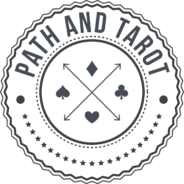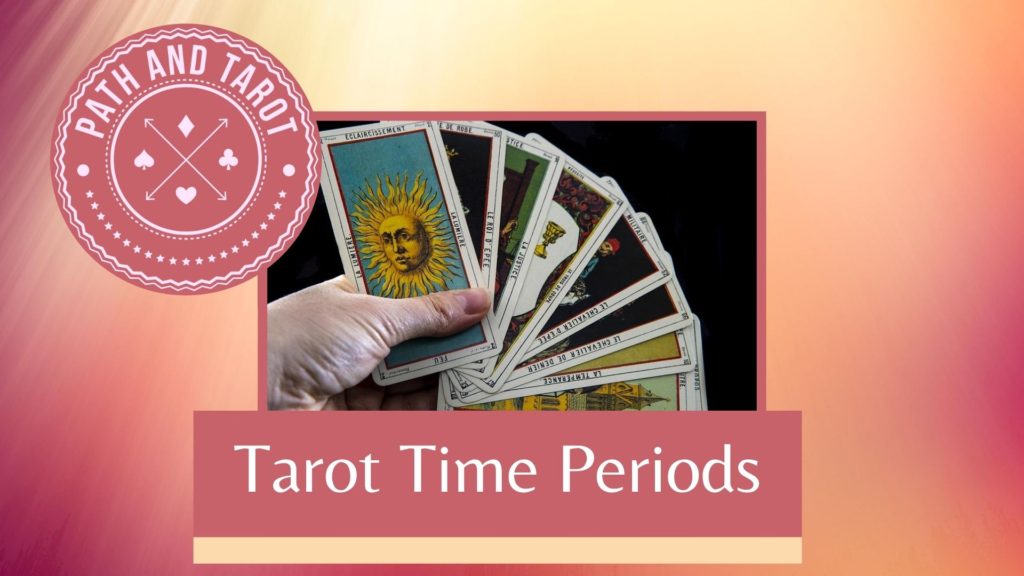By now you may have realized that Tarot decks come in a variety of styles. Some Tarot decks look-alike while some don’t.
My first tarot deck was Marty Yeager Tarot Meditations, and it looked very different than other decks. Yeager’s minor arcana cards had only symbols without any images.
I found it challenging to read the cards. I would have to look up the meanings for the minor arcana constantly. The books I used all had different images making it more challenging. I kept at it, and over time I began to realize that it was normal for Tarot decks to come in a variety of forms.
To understand the Tarot is to know its many forms, the history, and the time periods of the cards. This article will look at some Tarot history, a few old-style Tarot decks, and their time periods.
Tarot History
Dr. Yoav Ben-Dov created a pdf that comes with your CBD Tarot de Marseille, and it suggests a period of time for the Tarot. Ben-Dov states that the Tarot originated in Northern Italy in the 14th century. Brian Williams notes that in northern Italy around the mid-1400s the fifth suit of trumps was added to the four suits playing card deck. Adding a fifth suit to the playing card deck created what we know now as a Tarot deck.
If we look at the Wikipedia article for “Tarot” it suggests that it became accepted around the 15th century in various parts of Europe. The time periods somewhat lines up with what and Brian Williams by Dr. Yoav Ben-Dov claim in their writings. Using these sources we can declare that Tarot originated sometime between the 14th and 15th centuries.
Tarot decks before the 20th century had a variety of forms mostly related to playing cards. The major arcana was fully illustrated, but the minor arcana resembled playing cards. The court cards had some illustrations but the minor pips were usually symbols of the suit arranged in a geometric pattern.
In this article, we will be looking at the Minchiate Tarot, The Book of Thoth (Tarot Etteilla), and Tarot de Marseille. These three decks are all reproductions of original decks made before the 20th century.
Tarot Minchiate 1700s
The copy I have of the Tarot Minchiate is by Brian Williams published by Destiny Books. This is a reproduction of the Tarot Minchiate from the early 1700s. Williams is not specific about the exact time period because the deck draws from various sources. Despite this Williams notes that he draws inspiration from the materials found in the 1700s.

The word “minchiate” means “nonsense.” This makes sense where you understand that Tarot Minchiate was used as a trick-taking card game. You can learn more about trick-taking games using French Tarot cards here.
The major arcana in the Minchiate Tarot is very different than what we know it as today. It is expanded and renamed. This major arcana includes the 4 elements and the 12 astrological signs to make up a 97 card deck.
You will see familiar virtues like Strength, Temperance, and Justice in the deck. You will also see other virtues like Prudence, Hope, Charity, and Faith. These virtues are usually omitted from most contemporary Tarot decks, but they are all included in the Minchiate Tarot.
Having the expanded major arcana creates a new way to look at the spiritual energies in a Tarot deck. The imagery has human figures on all the major arcana and court cards. You will notice that the knights of each suit are centaurs.
The minor arcana pip cards are designed with symbolic images arranged in a geometrical pattern. The minor pips resemble playing cards and fit in with the dominant style of the time.
There is a warm glow to this deck that is indescribable. The only thing further I could say would be to experience this deck.
Tarot Etteilla 1870
Tarot Etteila is named after the cartomant Jean François Alliette who wrote under the pen name Etteilla. This deck is also a reproduction by Lo Scarabeo based on the Paris 1870 Tarot deck.

Like the Minchaite Tarot, the major arcana for the Tarot Etteilla is unlike what we recognize in contemporary Tarot decks. The entire set of trump cards are reorganized and renamed. They include the four virtues Strength, Temperance, Justice, and Prudence like the Minchiate Tarot, but also include other archetypal energies like Chaos, Marriage, Heavens, Temple, and Rest to fill out the major trumps.
The minor arcana remains unchanged with pip cards from ace to ten having geometric symbols of the suit like the Minchiate Tarot. The court cards have illustrations of human figures like the Tarot Minchiate as well. Again, this is all par for the course when it comes to the dominant style of the time is.
The entire deck is in French and uses reversed meanings. This is written directly on the card to make it obvious to the reader that the card is reversed.
The Tarot Etteilla has a deep subtle beauty. The archetypal images are different but present the reader with the same spiritual depth. This Tarot deck has a curious personality and is one that you should experience.
Tarot de Marseille 1760
Compared to the other mentioned decks the Tarot de Marseille is the most notable. Like the others, it has playing cards like minor arcana cards. The imagery on the minor arcana pip cards is only symbols of the suit with the court cards illustrated with human figures.
Out of the three decks, Tarot de Marseille should be the most familiar. The major arcana of Tarot de Marseille remains unchanged and is used in many other modern and contemporary decks. You will see the Magician, High Priestess, Empress, Emperor, Hierophant, Lovers, Chariot, Strength, Hermit, and Wheel of Fortune and onward to the World (Universe). The images are illustrated in a way is very familiar because many decks have borrowed the images in some way. If you want to learn more about the Tarot you can go here.
The deck I use is CBD Tarot de Marseille. Like the other decks, this is a reproduction of Nicholas Conver’s work in 1760 by Dr. Yoav Ben-Dov. Just in case you were wondering what CBD stands for it means Conver Ben-Dov. If you want to learn how to print this deck go here.
Historic Conclusion
I wonder why the major arcana structure in the Tarot de Marseille is the most dominant? Why didn’t Etteilla Tarot become the dominant structure of Tarot cards? I feel like the answer is the use of the cards. There is something about the archetypal structure found in the Tarot de Marseille that just seems to work. No matter what combination of cards comes out, you have a clear answer with the Tarot de Marseille.
Maybe time will tell us more. As I continue to use both Etteilla and Minchiate Tarot I will learn more about their secrets.
Attribution: CBD Tarot de Marseille by Dr. Yoav Ben-Dov, www.cbdtarot.com
As an Amazon Associate I earn from qualifying purchase. Know that any gains are reinvested into this website. The end result is that you are supporting the creation of quality content.
References
https://en.wikipedia.org/wiki/Minchiate
https://en.wikipedia.org/wiki/Etteilla
https://en.wikipedia.org/wiki/Tarot


